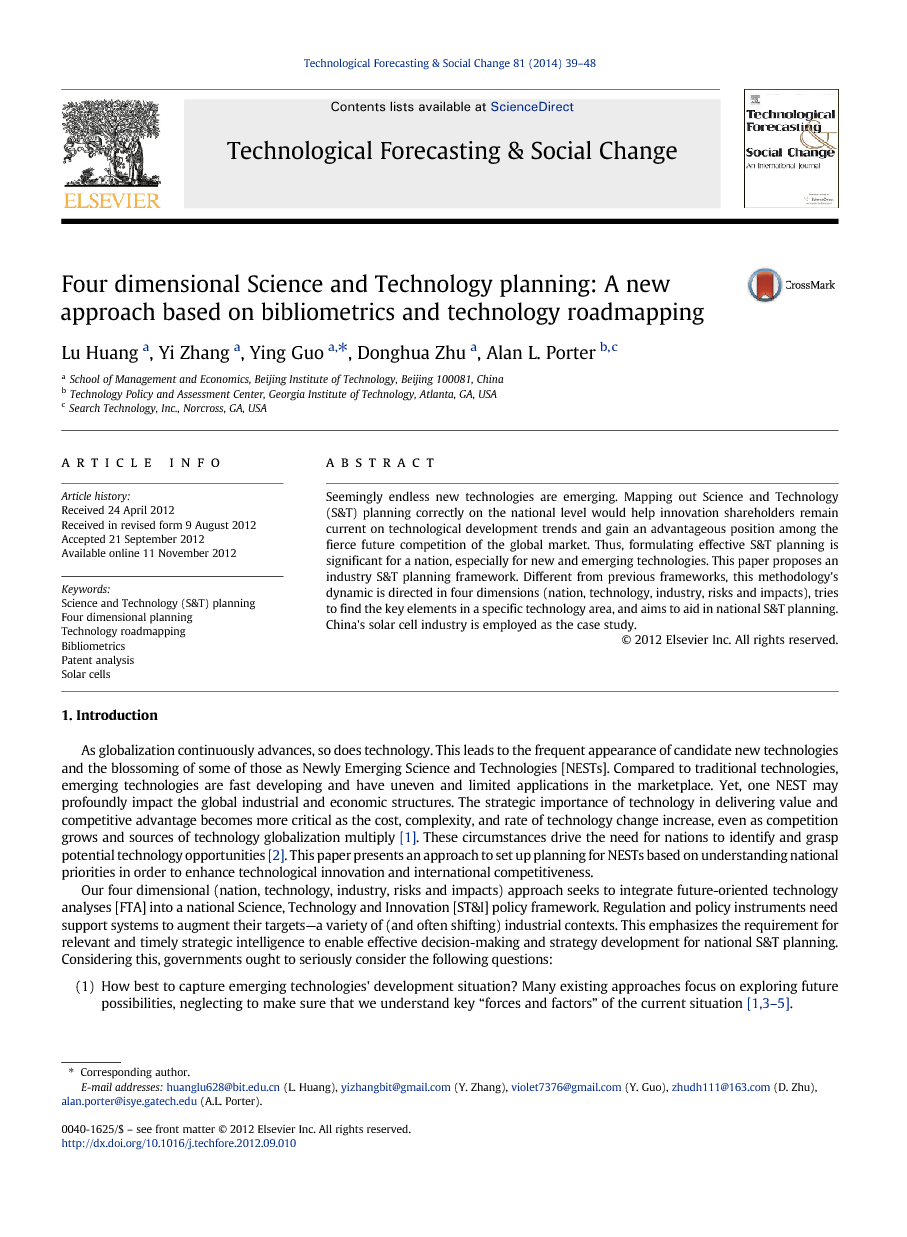ترجمه فارسی عنوان مقاله
چهار بعد علم و صنعت برنامه ریزی فناوری: یک روش جدید بر اساس کتاب سنجی و مسیر نمای
عنوان انگلیسی
Four dimensional Science and Technology planning: A new approach based on bibliometrics and technology roadmapping
| کد مقاله | سال انتشار | تعداد صفحات مقاله انگلیسی |
|---|---|---|
| 26669 | 2014 | 10 صفحه PDF |
منبع

Publisher : Elsevier - Science Direct (الزویر - ساینس دایرکت)
Journal : Technological Forecasting and Social Change, Volume 81, January 2014, Pages 39–48
ترجمه کلمات کلیدی
(&) علم و فناوری ( & ) برنامه ریزی - برنامه ریزی چهار بعدی - مسیر نمای فناوری سنجی - تجزیه و تحلیل ثبت اختراع - سلول های خورشیدی
کلمات کلیدی انگلیسی
Science and Technology (S&T) planning, Four dimensional planning, Technology roadmapping, Bibliometrics, Patent analysis,Solar cells

